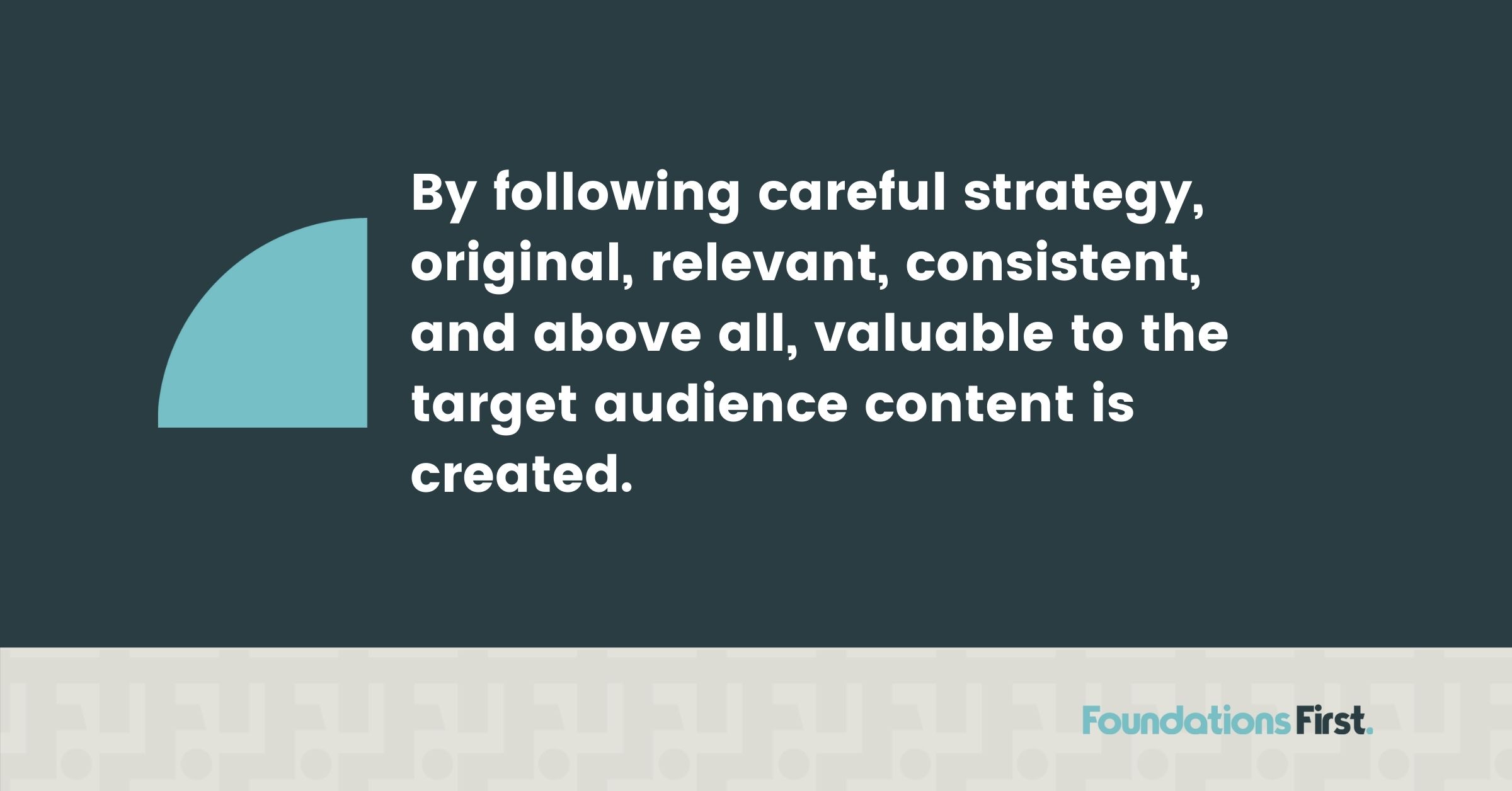Create a Great Content Marketing Strategy in 3 Steps

Want a content marketing strategy that really works? Here is a proven 3-step method. 1. Create great content by collaborating. 2. Actually plan things. 3. Analyze the hell out of wins and losses.
1. Create Great Content
What’s “great content?”
- Great content is relevant. It’s relevant if it creates traffic, engagement, some good leads, or possibly even a conversion.
- Great content is consistent. Consistency isn’t the sexiest of concepts, but it makes customers happy. Consistent messaging across channels and throughout the entirety of the customer journey measurably increases customer satisfaction, trust, and customer loyalty.
- Great content is valuable to your target audience. Follow the newlywed gift rule to figure out what your target audience wants. ASK and DELIVER. If you don’t, your content won’t be read, and the leaf blower you presented your wife for her birthday will end up in Wednesday’s garbage.
How do I create great content? Strategy and collaboration.
Crawl out of your silos. It’s time to work collaboratively. A message-driven client focus (relevant, consistent, and valuable content) comes from content marketing soliciting advice from a broad spectrum of in-house and/or contracted sources. Making content decisions in isolation needs to stop. A broader strategic marketing plan requires stakeholders’ data and perspectives. Gather sales, customer success managers, all digital channel managers, digital strategists, and someone who makes great coffee. In short, include people who know where the marketing bodies and analytics are buried. Then, get to work to discuss and accomplish the following:
- Review target audience data
- Articulate and share customer goals
- Identify content goals by answering:
- What type of content will generate leads?
- What type of content will create cross-channel brand awareness?
- What type of content will move customers in a profit-increasing direction?
- What type of content will build customer loyalty and retention?
- Based on articulated content goals:
- Is there content that should be repurposed and cross promoted? All channels should be notified of what content is available for repurposing.
- Integrate SEO best practices into every piece of content, which is based on SEO strategy.
- ROI is embedded into campaign budgets and parameters. Content must work with digital strategists to figure out how much can be created within budgets. Some campaigns need only a blog post, while others need a video, white paper, and infographic. Budgets require evaluating content needs from every department.
By following careful strategy, original, relevant, consistent, and above all, valuable to the target audience content is created. The team approach combined with good data delivers to the content marketing team your customers’ tastes, needs, and values. Remember, you create content around that data.
2. Actually plan things
You’ve got great content, now do something with it.
In step one, content marketing solicited input from all departments and stakeholders. Now, all departments should request content from the content marketing team. The content marketing team should utilize a calendar and applicable management tools to ensure content creation is appropriately prioritized and distributed while staying in line with budget, timelines, company needs, and content strategy goals.
Having said this, companies should not fear adapting a more agile structure when data show quick changes are required in content strategy. Two-way communication from content marketing to marketing and delivery points is key.
If you’re new to content marketing calendars, there are many templates available that you can adjust to fit your needs. Hubspot has a selection of free blog editorial calendar templates. The Content Marketing Institute provides a links to an operations workbook, a content request template, an SEO checklist, and a terrific editorial calendar checklist.
3. Analyze the hell out of wins and losses
Content can’t be left to its own devices. It must be reviewed and analyzed for continual improvement. Plus, you want a return on your content investment. Continual analysis determines what messaging and media are most successful in driving views and conversions. The content team needs to analyze data from all digital channels to make recommendations for messaging shifts, key content amplification, and content repurposing or cross-channeling. However, different strategic goals demand particular metric sets to ensure the right data are used to well-inform decision-making.
Cindy Powell
Categories
- Analytics and Measurement
- Brand Messaging
- Competitor Analysis
- Content Marketing
- Digital Marketing Strategy
- Digital PR & Events
- Marketing Budgets
- Marketing KPIs
- Marketing News
- Marketing Rock Samples
- Marketing Staffing & Vendors
- Marketing Strategy
- Marketing Tech Stack
- Podcast
- Product Marketing
- Sales Marketing Alignment
- SEO
- Social Media
- Strategic Marketing Partnerships
- Target Markets
- Uncategorized
- Vision & Purpose
- Webmaster








